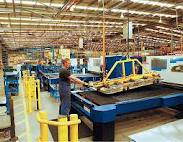It is well documented that there is a talent shortage in the engineering ranks and especially in controls engineering these days. It seems as though we are losing more engineers than we are gaining in our industry and it is a shame. The demand has never been greater and almost every customer I talk with has a similar need and similar struggle in finding good talent. We have struggled to find qualified engineers who would fit our culture out in industry and even when we do find good ones, it often takes them a while to get used to our culture and our pace in many cases if they have come from a plant environment.
About 6 or 7 years ago, LSI hired several young engineers and began training them as we have found that we needed a new generation of engineers and leaders for our company. We lost a few, but kept most of them, and many are the bright young stars at our company. We have recently had another hiring spree of young engineers because of our growth (our business and number of employees has doubled since 2008). However, the challenge is how do you train these young minds when you are busy? I talk with customers frequently and they have the same challenge, so we are not alone. I have asked how they are doing it and it seems as though training is simply “trial by fire” with little guidance is prevalent today because every company is running lean and they don’t have the training budgets nor the time to be able to train and mentor young engineers.
We at LSI are facing a similar challenge. We have to find billable work for these guys to work on yet they have limited skills at this point (as they have almost no practical experience from their schooling), and we can get too busy to take the time to train them. So, we have implemented several levels of training to try to get the “newbies” up to speed and give them a good basis for doing their work. We are training once a week at different times (early morning and late afternoon) and at various levels (from entry-level to intermediate) on various topics, along with the general work assignments they are given. we are also assigning “mentors” to each young engineer to guide him or her through their career here. Even with what we are doing, it is still a challenge.
I still remember being their age and all I knew about PLC’s was the following:
- I knew how to spell PLC
- Some guy named Allen Bradley was really famous in the industry and must be rich!
Through all of this, I have been so impressed with their willingness to dig in and work. We have been blessed with a tremendous group of young engineers who have a personality and a work ethic to go along with a degree. It is so encouraging because you keep hearing how this generation has a sense of entitlement and is lazy, which at times is true from my experience, but we have been blessed with young people who are humble and hungry to learn. Feeding their minds with all of our collective experience while we all remain productive is going to be a challenge. I would love to hear how other companies are meeting this challenge of finding, attracting, keeping, and training talent. Please comment or send me a private note!






